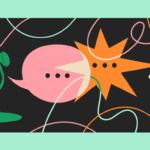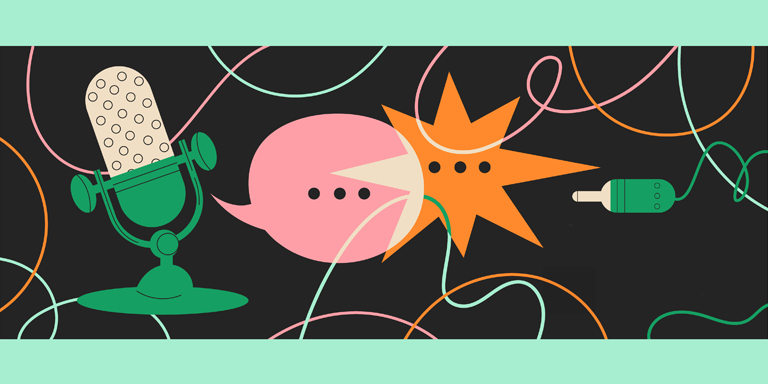6 steps to create effective re -annotation campaigns

Effective Re -Ketting Campaigns is a powerful way to re -engage with potential customers visiting your website or social channels to drive transitions and reduce cart leaving rates.
By following key steps and best practice, businesses can create compelling, personalized ads that boost their sales and maximize donation.
And do you know the best part? Re -opt -up ads see advanced CTRS and conversion rates than regular display ads, making these a cost -effective marketing tool.
Key takeaways
- For businesses of all sizes, Re -Ketting provides the opportunity to maximize visitor touch points.
- When properly applied, using audience segmentation, personalized content, and continuous optimization, re -annotation campaigns can be one of the most effective ways of driving growth, keeping customers and increasing engagement.
- What is measured, is improved – testing and learning is essential if you want to improve the results of your campaign.
6 steps to create effective re -annotation campaigns
First things first, what is re -annotating? Why is it essential for re -engaging potential customers and improving adaptations?
Re -netting is a game transformer, the Joker in your package of marketing cards, offering you a way to win potential customers who have shown interest in your brand. Want to know more about how to create a marketing campaign that makes you stand out? Read this!
Whether you run an e -commerce shop or offer a service, re -annotating helps you stay at the top of the mind. Here’s how you can set up a murderer re -issue campaign in 6 easy steps.
1. Understand the essentials of re -annuming
Establishing ads shown across different platforms and re -announcing helps to remind these potential customers of how amazing you are and why they should come back and complete the desired action. If you need some more convincing about how useful it is to re -announce, here’s why:
- Increases transitions: People are busy but by showing a well -timed ad, you could Increase sales at -lein 20% (on average).
- Boosts engagement: Don’t let them escape! Re -annoying helps keep your business at the top of the mind as visitors browse elsewhere, increasing the chance they will come back to you!
- Decreases leaving a cart: E-commerce sites often see better sales by reminding users of remaining items in their trolleys. Unless we are hopeless, just for 2% of website visitors convert On their first website visit. Re -annoying helps bring your customers back, giving you a second chance to turn browsers into buyers.
2. Choose your re -annuming platforms
Your next step is to choose where to run your rechargeable ads. Some popular platforms include:
- Google ads: Reach users through the Google and YouTube display network. The Google Display Network Reaches over 90% of internet -wide users, making it one of the largest platforms for re -ketting campaigning.
- Facebook and Instagram ads: Target users on social media platforms where they spend most of their time. Tough Mudder, an extreme obstacle racing company, used Facebook re -announcing ads to reconnect with consumers who left their ticket purchases. By re -announcing, they decreased by their 33% cart departure rate and saw 5 times returning on advertisement expenditure.
- LinkedIn ads: Great for B2B businesses targeting professionals.
Start by choosing platforms where your audience is most active. You can run ads across several platforms for wider coverage or focus on just one to maximize your advertising budget.
3. Define your audience
Now that you have selected your platform, the key to an effective campaign is to define the right audience segments. Here are a few common types of audiences for re -announcing:
- Website visitors: People who visited your site but had not completed an action. You can add tracking pixels to your entire site or specific pages, which allow you to re -extract through almost instant display ads.
- Cart backs up: Have you ever received a personalized email saying, ‘Hey, look what you forget?’ – Well, try this yourself! Remind your customers for what they are missing.
- Content Viewers: If you know that a website visitor has read your blog or watched a video but have not signed or bought, you know they like your content, so just remind them why they shouldn’t miss any more.
- Former -customers: Consumers who have purchased and who may be vulnerable to increasing or repeating purchases. You could use a list -on -the -list for these customers as this requires some level of contact information as an email address. Don’t get a e -mail list yet? Read more about How to build a huge e -mail database. This is useful in creating advertisements that are highly personalized as the contents of their name, or what they bought the last time they shopped with you.
4. Create a compelling advertisement content
The message is important! Your creative ad should echo with your audience and reflect their specific step in the customer’s tour. Make sure your ad images are impressive, brief, and include a clear call to operate. For example:
- Abandoned cart advertisements: Show consumers the exact products they left behind, offering a small discount or free ships.
- Product Reminder Ads: Remind consumers about the benefits of the product they saw or show them positive reviews. People believe in people, not necessarily in businesses. The honest company used a dynamic re -ketting to show customers the exact products they had seen before. This led to a Conversion rate 36% higher.
- Loyal customer ads: Offer repetitive customers or new product publications. Make your customers feel valued, and will return the favor through loyalty.
- Launch and make the most of your campaign
Once everything is in place, launch your campaign and track its performance closely. Testing and learning is an essential part of marketing – tracking what works or doesn’t work to make the most of your performance. Most platforms offer detailed analytics that show how your ads make in terms of clicks, conversions, and cost-per-Clic.
- Testing A/B: Test different creative people, messages and CTAs to see what echoes best.
- Frequency capping: Limit how often someone sees your ad to prevent the fatigue of ads.
- Adapt a proposal: Optimize your performance -based offers. If a specific audience converts better, you can increase the application for that group.
6. Strategies for continuous improvement
To keep your campaigns to perform at their best, closely monitor metrics. Worried about which metrics to focus on? Look at this guide on the most relevant marketing statistics and adopt these best practices:
- Refresh your ads: Exchange creative people every few weeks to keep your ads from getting old.
- Segment your audience: Narrowing your re -ketting lists. For example, create a separate ads for users who left their cart against only those who browsed.
- Optimizing landing pages: Make sure your landing page is in conjunction with the message of your advertisement for a non -or experience.
- Use bans: Exclude people who have already converted so that you do not waste your budget on people who do not need to be repeated further.
The moral of the story is, whether you start a small or established company, re -announcing can be a highly effective way to drive growth and boost transformations. It is a powerful tool for businesses of all sizes, helping you increase every potential lead and conversion opportunity.
If you want more business support, keep up to date with quickly evolving business world with weekly live training and question and answer with expert founders and real-human support from the Founder’s business team for just $ 1 a month.
You will also have access to over 1000+ lessons that will accelerate the growth and development of your business! Get access here.
Frequently Asked Questions:
What is the difference between re -ketting and re -printing?
The main difference between re -letting and re -printing is the audience they target and the channels they use:
- Re -annotation – targets users who use paid ads to reach new customers who have interacted with your website or social media but have not yet converted.
- Reprint -target users through direct channels like e -mail or SMS that have already interacted with your brand, such as making an app purchase or download.
What platforms can I use for re -annotating?
There is so much! Shop around and discover the best platforms for your business as each will have its own advantages, disadvantages and pricing.
How much does a re -annoying cost?
This will vary depending on the business. However, tthe average cost for re -printing on the goOgle is $ 0.66 to $ 1.23 per click. By comparison, the average cost-fesul-clic (CPC) for searching and displaying ads on Google RanI got from $ 1 to $ 2 for search ads and less than $ 1 for display ads.
How do I improve re -ketting ads?
Personalization is one of the biggest wins you could put into practice. Personalized messages have been proven to promote conversations. You could also Action Capping frequency – Set an end to how often consumers see your ads to avoid ads fatigue.










